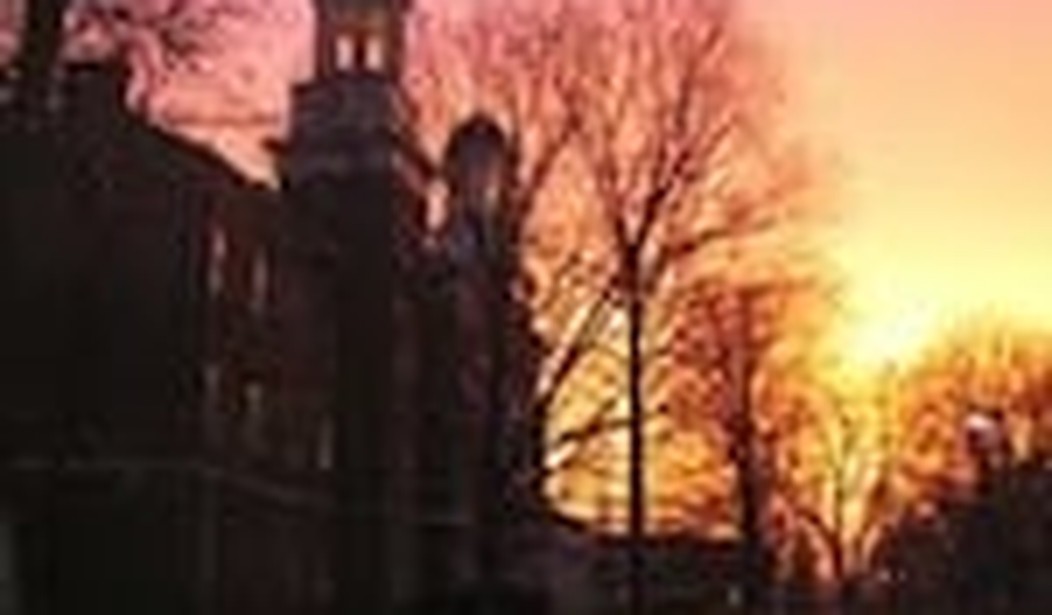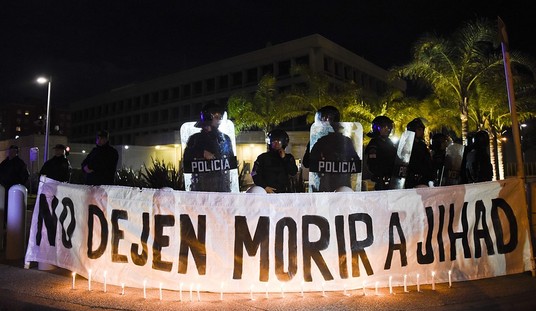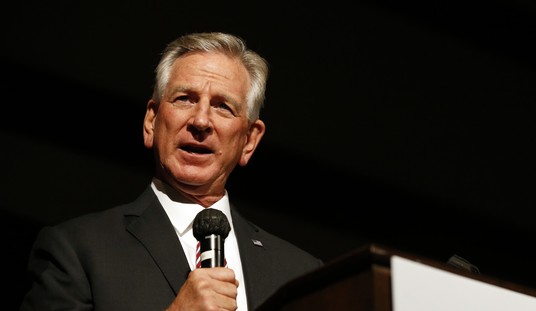Bagel & Deli has never left the 1990s. The tiny hangover haven for students at Miami University in Oxford, Ohio, boasts wallpaper made of actual Newsweek covers. It offers, as a special, the Tonya Harding club sandwich (“It’s a Hit!”). There are no tables, no chairs, and practically no changes from when Republican vice presidential nominee Paul Ryan stood in line here as an undergrad.
The national press and opposition researchers descended on campus when Ryan was elevated to the ticket. They found little else but images of a turtlenecked Ryan in frat group shots and a grainy photo of his African American girlfriend on the cheerleading squad. Unable to fulfill persistent “paul ryan shirtless” Google requests, they withdrew, missing the story of Miami’s impact on Ryan, and the potential role his fellow alumni might play in the do-or-die swing state of Ohio.
Ryan graduated from Miami in 1992, taking with him a BA in economics and political science. Within three days of his unveiling as Mitt Romney’s running mate in August, Ryan was back on campus, clutching a “lucky Ohio buckeye” handed to him by U.S. Senator Rob Portman.
He spoke briefly of Bagel & Deli and the school’s prowess in the rink (“That’s why I have a cleft chin — fourteen stitches playing hockey here”). He then launched into his stump speech, his Wisconsin accent echoing off the red brick buildings which command every corner of the campus, from the old main building to the new parking garages. For the next fifteen minutes, it was Medicare, payroll taxes, health insurance, “an election based on anger and division.” Paul Ryan had moved on. But maybe not as much as it seemed.
In southwest Ohio, Miami commands the financial heights of the collegiate landscape. Future architects, engineers, and doctors apply to the University of Cincinnati. Teachers funnel into the tiny College of Mount St. Joseph, and in downtown Cincinnati you cannot swing a dirty martini without hitting an MBA from Xavier University. But undergrads take the SAT well aware that if their goal is under the business or econ umbrella, all roads lead to Oxford.
Miami, founded in 1809, is a showcase “public ivy,” a picturesque white-and-red-brick campus awash in khaki. Mainstream reporters often refer to Oxford as “bucolic” or “pastoral,” neither of which takes into account the town’s Starbucks, pottery painting studio, or Wild Berry, the local incense/feather boa/edible underwear shop.
The northern drive from Cincinnati to Oxford takes forty-five minutes and spans about eighteen different college-town stereotypes. You’ll see a person sporting a crocheted beret wheeling a unicycle past a ramshackle tire shop. Until recently, a gas station featuring a Vend-a-Bait machine was the last major landmark between the big city and the little town; the rest is cornfields, sprawling churches, and a roadside amusement park offering a hand-built wooden roller coaster. When Ryan was a student here, Oxford’s tallest structure was a rusting 130-foot water tower.
Ryan was required to live on campus with the rest of the freshman class and faced the usual gauntlet of liberal arts curriculum courses, including formal reasoning and a foreign language. By the time he was a declared economics and political science major, he was balancing requirements in calculus, statistics, and international policy.
Like about a quarter of Miami’s students, Paul Ryan went Greek, pledging Delta Tau Delta. Student fads during his time in Oxford included marathon euchre games and “traying,” the practice of secreting trays out of the dining halls to use as sleds on snowy campus hills.
So: it’s no seething cauldron of social unrest. Oxford is an especially unpopular place to riot. The closest the student body came to doing so during Ryan’s tenure was the destruction of the football stadium’s goalposts upon the ending of a 20-game losing streak in his sophomore year. An ecstatic crowd carried one to the foot of the aforementioned water tower, deposited it there, then, unsure of what to do next, drank some more and went home.
Perhaps because nearly 25% of undergraduates are business students, Miami’s population can be startlingly conservative for a large-ish public university. It hosts a wide-ranging collection of left-wing student groups, but they hardly have the run of the joint; this is a school whose student body, in a wild act of defiance, started its own credit union.
When Ohio threw its 20 electoral votes to President Obama in 2008, it’s notable that Butler County, which houses Oxford, did not. It was the American Idol election, with college students surging to the polls, and yet Miami’s enrollment of 15,000 seemed largely unimpressed. Butler yielded a 61% to 38% landslide for McCain. Meanwhile, across the state, Athens County — home to Miami’s blood enemy, Ohio University — was an island of blue.
Thus Miami can be, as Ryan found, fertile meeting ground for the likes of National Review. Here, he solidified an early affinity for Ayn Rand, Friedrich Hayek, and Milton Friedman. While the political press has been largely focused on his work with Jack Kemp and Ohio Governor John Kasich, Ryan was first mentored by political science professor Dr. Rich Hart. Ryan warmly thanked Hart in his 2009 Miami commencement address, affirming that “it was here where I fell in love with economics and public policy.”
Miami’s population tends to remain tightly knit, perhaps because it is strongly regional. Many students are homegrown in Ohio. Miamians tend to converge upon Oxford, then scatter right back to where they came from. Which isn’t far: the Alumni Association boasts eight chapters in Ohio, compared to just one for the entire neighboring state of Kentucky.
The university produces so many alumni marriages that these pairings are referred to as “Miami Mergers,” with the couples receiving cards from the Alumni Association on Valentine’s Day. When a Miami Merger produces a Miami Multiplication, they pull from their cupboards the fading plastic cups they once toted to campus bars, trading one form of suds for another as they dunk them in bathwater to wash their babies’ hair.
This intimacy can produce, at times, an “us versus them” mentality. Some Miami students and alums chafe at the parenthetical (OH) the national media tends to place after the name of their school to distinguish it from the University of Miami in Florida, as though the university in Ohio were “the other one,” an extremely northern satellite campus of Coral Gables. The sensitivity is born of many decades of media flyover mentality regarding Oxford. When the AP interviewed Hart on campus, the dateline was placed as “Cincinnati,” as though the reporter were grasping for something, anything remotely resembling civilization in the form of a Nordstrom.
But if you hear Paul Ryan making far more references to the Wisconsin Badgers than the Miami RedHawks (Redskins when he was a student), it’s because Miami has performed the remarkable feat of retaining a particularly strong alumni base without a particularly strong national football or basketball program. According to US News and World Report’s annual college rankings for 2011, Miami ranks 71st nationally in alumni giving — outperforming the University of Michigan, the University of Florida, Ohio State, the University of Texas, and the hated Ohio University.
Its mostly respectable athletics programs are competitive without tipping into a frenzied fan culture or the NCAA-flouting excesses which so often follow. Miami occasionally plays the likes of Florida and Ohio State, despite the fact that the result often resembles this season’s 56-10 drubbing in Columbus. Judging by the pictures, however, Miami’s marching band had a wonderful time, and that’s the core of the affection: the alums shrugged, said “Oh, well,” and rather than call for the head of coach Don Treadwell, went on marrying one another.
Yet amongst this sea of red bricks and Mergerism, Ryan made a philosophical outcry against conformism in his 2009 commencement speech:
I’m not going to judge the 1960s, but I wonder whether we haven’t somersaulted back to a more subtle conformism rooted in the rebellion that overthrew the old one.
In the days of the old conformism, children using naughty words only had their mouth washed out with soap. Today’s students, faculties, and administrators, and many academic institutions must learn which phrases can never be spoken, or might even sound like a word that can’t be spoken for fear of being ostracized. We have moved from a world of accepted rights and wrongs to a relativist world where everything is okay but for accepted rights and wrongs.
…
The conformism of our time is relativism. Destroy these timeless standards and you destroy our highest hopes and aspirations.
The conformism of the giant corporation and the new conformism of the government bureaucrat are practically the same thing, erecting more hurdles on entrepreneurship, work, savings, and capital, and blinding the vision of risk takers with a wall of directives is Washington’s analogue to campus conformism.
If these words were startling to hear on a college campus just 18 months after Obama was elected, bear in mind they were spoken at Miami, where Ryan’s frat house flew a Republican flag the day he returned to town in a Romney-Ryan campaign transport.
According to the highly accurate Bickers and Berry model, an electoral vote forecasting formula from the University of Colorado, the home of a vice presidential nominee has no statistical impact on whether a state checks in as blue or red. Then again, Paul Ryan wasn’t born in Ohio. He sure attended college there, though — a college with a deeply loyal alumni base which tends to stay put in Ohio, a state where 3% of the vote could well decide the next president of the United States.
About three months after he presented himself to his old college town as a vice presidential candidate, Ryan visited a rally in Cincinnati. He held aloft the buckeye lent to him by Rob Portman on Miami’s campus, which, he told the crowd, travelled with the senator throughout his own campaign. There are parts of Ohio, it seems, that Paul Ryan always carries with him.









Join the conversation as a VIP Member